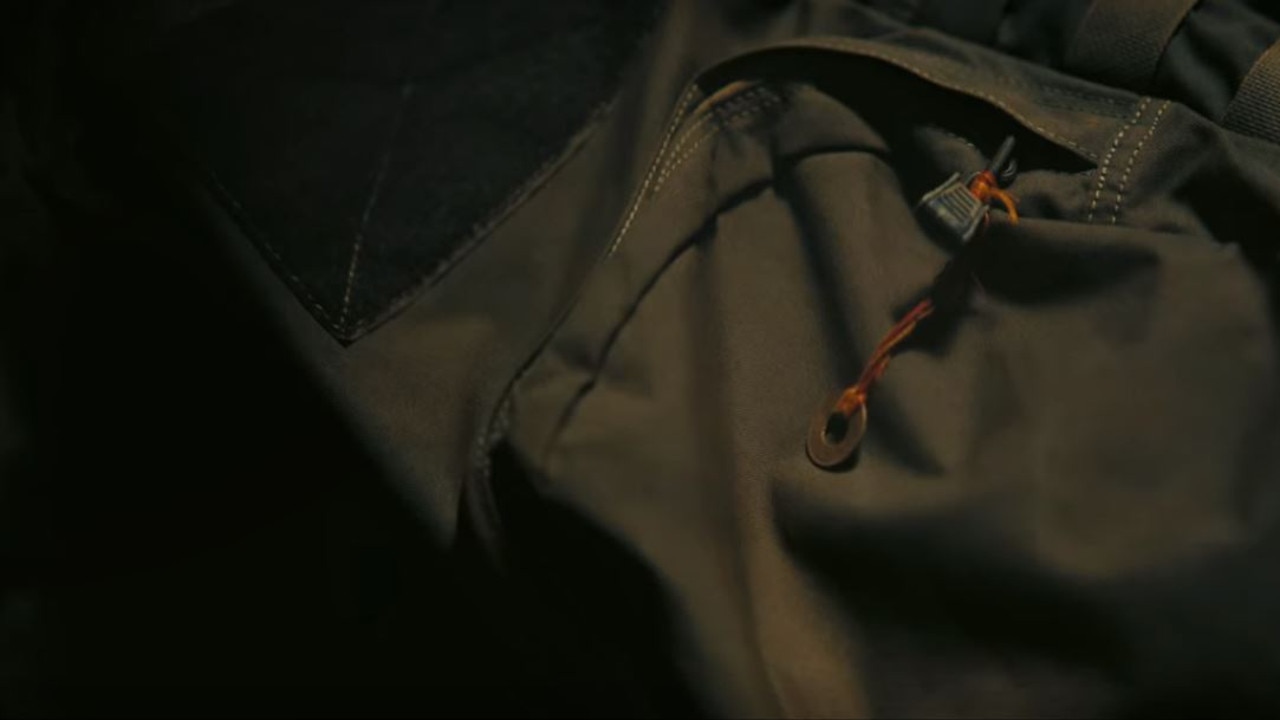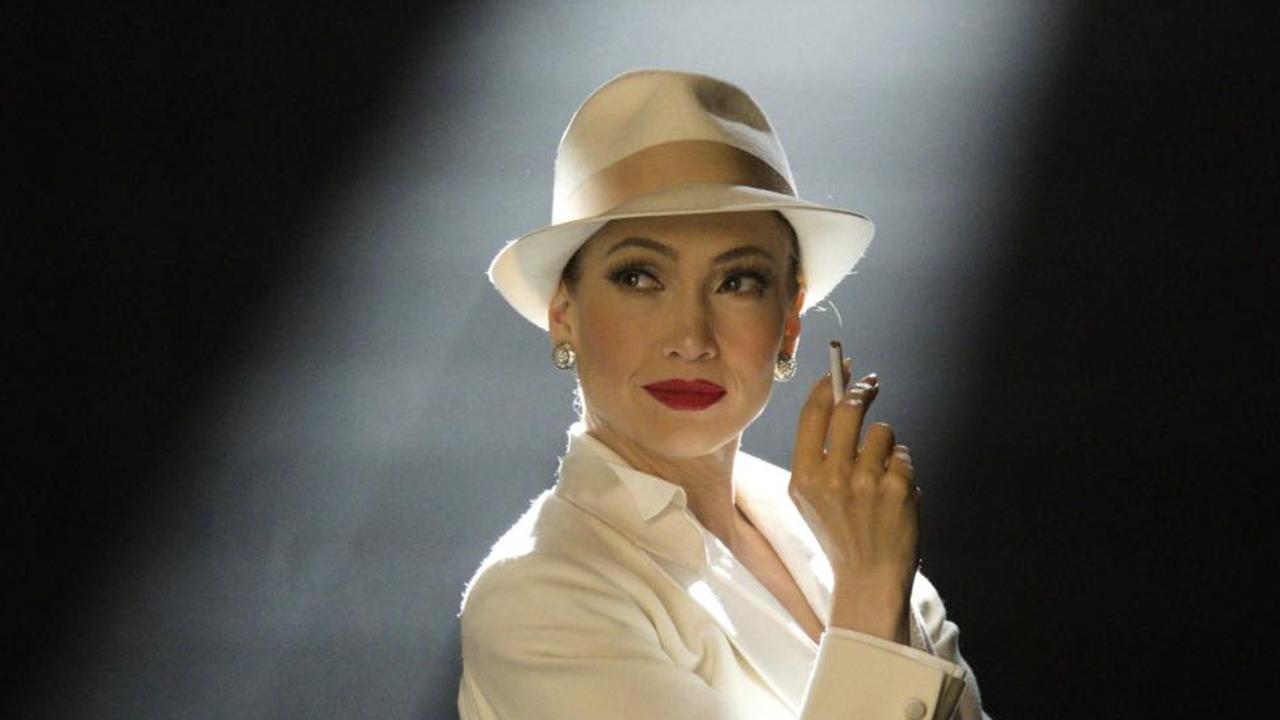You have no hope of understanding Tenet without getting these concepts
One of the most confounding movies of 2020 is finally available to stream. But you’ll have no hope of understanding it without getting this first. WARNING: Spoilers.

WARNING: Spoilers.
OK, we know director Christopher Nolan doesn’t like to make things easy for movie audiences.
The man likes a puzzle, a plot that takes 732 people on Reddit and seven graphs to figure out. And even then, you might still be scratching your head.
Tenet is so confounding even its lead star John David Washington confessed to not fully understanding what was going on.
The often-too-cerebral action blockbuster is now available to stream on Foxtel*, which means you have a much better chance of understanding what’s going on if you can rewind scenes or turn the subtitles on to catch all the muffled dialogue.
Tenet is essentially a sci-fi spy thriller in which a character called the Protagonist is trying to save the world by stopping a Russian oligarch bent on destroying it. At its core, the plot is not more complicated than a James Bond movie – it’s just how Tenet gets to that world-saving that is confounding as hell.

RELATED: What to watch on streaming this month
To help make sense of it, we’ve had a stab at trying to explain five Tenet elements you need to understand if you have any hope of getting it. It doesn’t explain everything because we suspect there may actually be some – gasp! – plot holes, but at least it’s a start.
This will obviously be SPOILER-HEAVY so if you haven’t seen Tenet yet, be warned – although knowing these things going in might actually help if you don’t care about plot twists.
Time inversion
Time inversion is the central concept in Tenet, although Nolan’s approach to the ins and outs of it can be summed up with Clemence Poesy’s line, “Don’t try to understand it, feel it.” Um, OK then?
The general idea behind time inversion is that you can go backwards in time, but not in a Back To The Future way in that you leave one point in time and arrive at another based on some calculations.
In Tenet, you literally move backwards through time. So, if you wanted to go back a week, you have to spend one week getting to that point. People and objects can both be inverted – Tenet calls it reverse entropy.
Watch Tenet on Foxtel. New customers get a 10-day free trial. Sign up at foxtel.com.au

RELATED: The Tenet puzzle hidden in plain view
But time is a closed loop in Tenet, which means in order for something to have reverse entropy, it needs to have already happened. So the bullet can only go backwards if it’s already been fired – you can’t just fire it backwards.
People travelling in reverse can’t interact with their environment as you normally would because the world isn’t inverted, only the people and objects who have been reverse-entropied are.
So, if you’re reversed, you walk and drive backwards and your lungs can’t take in air (reversed people breathe with oxygen tanks). And if you’re set on fire, instead of being burnt, you end up with hypothermia.
Yeah, we’re not sure all the rules apply equally.
Turnstiles

RELATED: Tenet review
The turnstiles are the future technology which allows people and objects to be reversed, like a massive revolving door.
Walk into one side as a regular person and you go out the other as your reverse entropy self – semi-helpfully, things that are colour-coded red are moving forwards in time while blue signifies inversion.
If you need to un-invert yourself, as the Protagonist, Katherine and Neil do, they have to go back through a turnstile to move forward.
The turnstiles only exist in our present because the future sent villain Sator the plans and materials to fabricate them – presumably very slowly through inversion.
Temporal pincer movement
At one point in Tenet, the Protagonist wonders if Neil is a mole because Sator seems to know what’s happening before things happen. Which is when the concept of the “temporal pincer movement” is introduced.
Essentially, the idea is that if you wanted to execute a plan at 5pm, you have half your team initiate their actions at 4.30pm while the other half starts at 5.30pm, but they’re inverted and moving backwards.
The advantage is that those moving backwards already know how everything is going to go down.

The massive battle at Stalask-12 in the final act is a temporal pincer movement, not that any of it is consequential because it was only a diversion for the real mission, which is Neil, Ives and the Protagonist trying to stop the algorithm being set off.
The real kicker is we find out at the end that the whole movie is a temporal pincer movement because Neil has been sent backwards in time by the Future Protagonist while the present Protagonist moves forwards and learns everything for the first time, who can then use that knowledge at some point in the future to send Neil back, and so on and so on.
If you’re wondering why Future Neil (or just Neil, really) can breathe the air and interact with everything normally, it’s because when Future Neil travelled back to a moment before the Protagonist meets him, he will have uninverted himself to move forwards in time.
Again, it’s a closed loop. Which means everything we’ve seen in Tenet has already happened. Kind of like rewatching Tenet.
The algorithm
The algorithm is the ultimate MacGuffin, an object everyone is trying to acquire, kicking off the action and motivating the characters. Think, Harry Potter’s horcruxes or the Avengers’ Infinity Stones.

The algorithm isn’t a line of code or a mathematic formula. Rather, they’re nine objects that when put together, it reverses the entropy of the Earth, ending it.
It was created in the future by a scientist who regretted it so they sent it backwards in time and scattered it all over the world.
Its creation is rooted in the future being pissed at our present for screwing up the planet but we’re not sure how this revenge plan works other than total destruction.
Neil’s backpack
During the opera siege at the beginning, the Protagonist is saved from certain death by a masked figure wearing a backpack with an orange string attached to it.

Then during the Stalask-12 battle at the end, the Protagonist sees a dead body on the ground who is wearing a backpack with that orange string. This dead body leaps back to life, takes a bullet and then disappears behind them, running backwards.
If you’re counting, that means he’s been rescued twice by this mysterious saviour. That saviour is Neil. It’s his backpack.
The Protagonist realises this and looks sad. So does Neil, but Neil also knows (how?) that he has to invert himself and go back to close his loop. We’re not sure how he knows his loop ends there if no one has told him but the moment is played for poignancy rather than logic.
We’re not convinced anything in Tenet is played for logic.
Tenet is streaming now on Foxtel and Foxtel Now
*Foxtel is majority owned by News Corp, publisher of news.com.au



